In 1931, the party set the task for horse breeders to create a hardy and unpretentious army horse based on the local livestock of the Kazakh steppes. Unsightly and small steppe horses were not suitable for service in the cavalry, but they had unsurpassed qualities that allowed them to survive in the steppe in winter without food. The horse breed planned by the authorities was to adopt these abilities, but be larger and stronger, in other words, suitable for service in the cavalry.
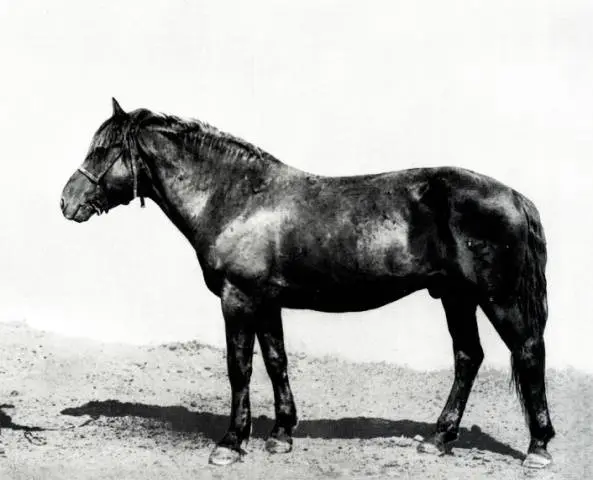
The purebred Kazakh horse, as seen in the photograph, was akin to the Mongolian breed and was suitable only for a convoy.
Thoroughbred stallions were brought to the Kazakh steppes to cross with local mares. Until the time of the German attack on the USSR, they did not manage to withdraw the necessary horse. Actually, they did not manage to withdraw it at all until the moment when the cavalry was disbanded in the army as unnecessary. But “each republic should have its own national breed.” And work on a new breed of horses continued until 1976, when, finally, they were able to register the Kushum breed of horses.
Breeding methods
To increase the height, improve the appearance and speed of the Kazakh native mares happened with Thoroughbred riding stallions. But Thoroughbreds do not have frost resistance and the ability to tebenevka. To select foals of the necessary qualities, brood herds were kept year-round in the steppe. Weak foals in this case do not survive.

Even today in Kazakhstan, traditional races on one-year-old foals are held. Given the scarcity of the resources of the Kazakh steppe, this attitude is more than justified: the sooner the weak die, the more food will remain for the survivors. A similar selection was also practiced in the selection of Kushum horses.
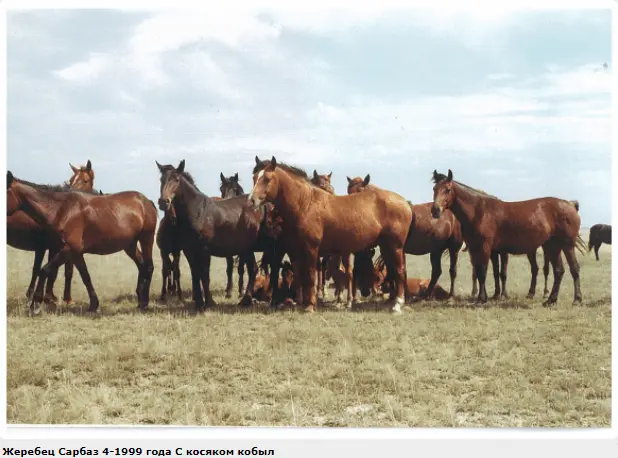
Later, in addition to Thoroughbred horses, Kazakh mares were crossed with Oryol trotters and Don stallions. The offspring, from 1950 until 1976, were used in complex reproductive crosses. During registration, the Kushum breed of horses was named after the Kushum River in Western Kazakhstan, in the region of which a new national breed was bred.
Description
The Kushum horse today is one of the highest quality Kazakh breeds. These horses are of decent size compared to the native stock of the steppe, but lead the same way of life.
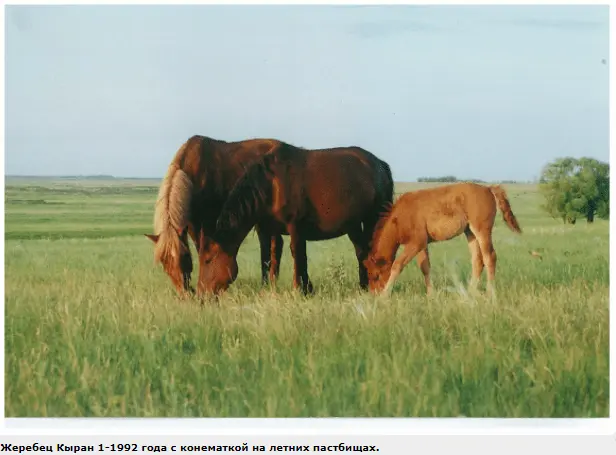
The growth of Kushum stallions is not inferior to the size of many factory breed horses: the height at the withers is 160 cm with an oblique body length of 161 cm. In fact, this means that the breeding Kushum stallion has a square format. In steppe native horses, the format is a lying rectangle. The chest girth of the stallion is 192 cm. The girth of the metacarpus is 21 cm. The bone index is 13,1. The live weight of the stallion is 540 kg.
The format of the Kushum mares is somewhat longer. Their height at the withers is 154 cm with a body length of 157 cm. The mares are quite powerful: chest girth is 183,5 cm with a metacarpus girth of 19,3 cm. The bone index of mares is 10,5. The live weight of the mare is 492 kg.
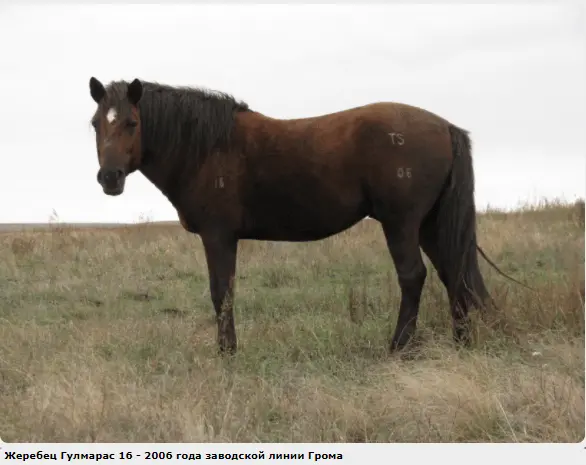
In connection with the abolition of the need for cavalry horses, the Kushumians began to reorient themselves to the meat and dairy direction. Today it is considered an achievement that the average weight of today’s Kushum horses has slightly increased compared to the 70s of the last century. But back in the 70s, the Kushum stallions brought to the VDNKh of the USSR weighed more than 600 kg.
Today, the average weight of a newborn foal ranges from 40 to 70 kg. Young animals weigh in the range of 400-450 kg already at the age of 2,5 years. Mares at the peak of lactation and good feed give 14-22 liters of milk per day. From 100 mares, 83-84 foals are born annually.
Kushum horses have the correct proportions of factory breeds. They have a medium-sized proportional head. Neck of medium length. The body is short and compact. Kushumians are distinguished by a deep and wide chest. Long oblique blade. Straight strong back. Short loin. The croup is well developed. Healthy, strong, dry feet.
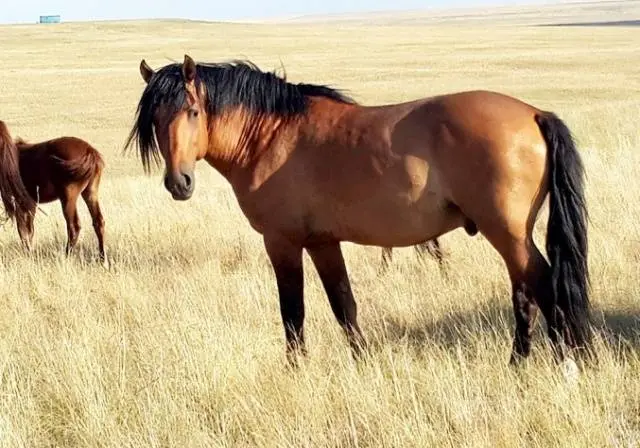
There are actually two colors in the breed: bay and red. The brown suit found in the descriptions is actually the darkest suit of the red suit.
Kushum horses are perfectly adapted to life in the steppes and do not differ from other Kazakh breeds in their fertility. They are resistant to necrobacillosis and blood parasitic diseases.
Three types have developed in the breed today: massive, main and riding. In the photo below, the riding type of the Kushum horse.
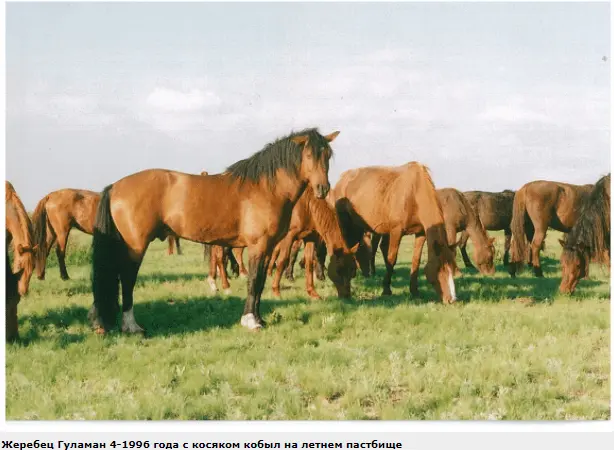
The massive type is more suitable for obtaining meat products. These are the heaviest horses, well fattening weight.
Today, the main work with the Kushum breed is carried out at the TS-AGRO LLP stud farm, located in the city of Aktob.
To date, TS-AGRO is the main breeding reproducer of the Kushum breed. Only he manages 347 breeding mares. Tribal young animals are sold to other farms.
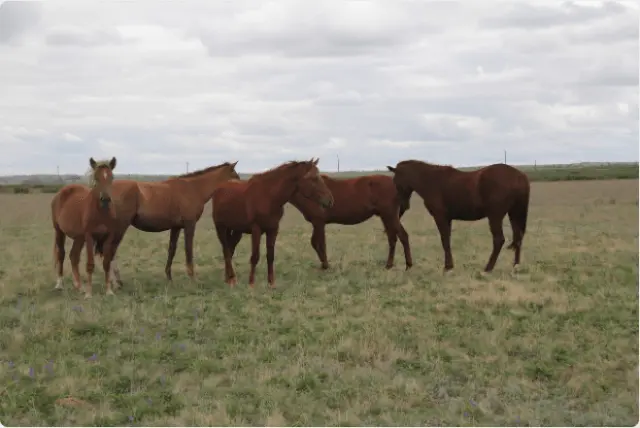
In addition to this breeding reproducer, the Kushum breed of horses is also bred in the Krasnodon and Pyatimar stud farms.
TS-AGRO conducts systematic breeding work under the guidance of S. Rzabayev. Work is carried out with already existing high-performance lines and lay the foundation for new lines.
Character
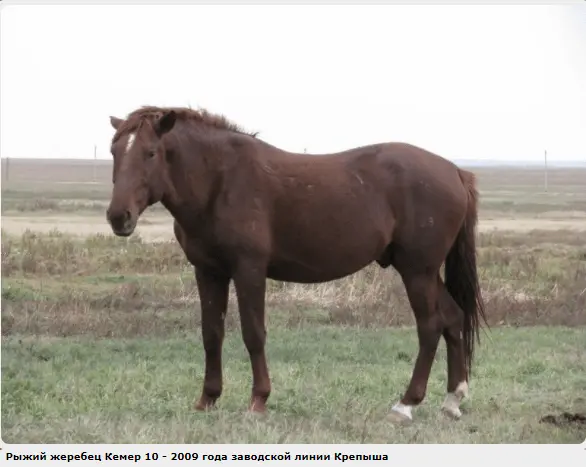
Like all breeds with aboriginal roots, Kushum horses are not particularly docile. This is especially true for mowing stallions, who protect their harem from various dangers all year round. Kushumians are characterized by independent thinking, a well-developed instinct for self-preservation and their own opinion on the events taking place around them and the requirements of the rider.
Application
In addition to providing the population of Kazakhstan with meat and milk, Kushum horses are able to serve in the transportation of goods and horse-drawn cattle. Tests on the runs showed that Kushumians can cover more than 200 km per day in a day. The run time per 100 km was 4 h. 11 m., that is, the average speed exceeded 20 km/h.
Kushumians show good results in harness tests. The time for passing the distance of 2 km at a trot with a draft force of 23 kg was 5 minutes. 54 sec. With a step with a draft force of 70 kg, the same distance was covered in 16 minutes. 44 sec.
Reviews

Conclusion
The Kushum breed of horses today belongs to the meat and dairy direction, but in fact it turned out to be universal. Depending on the type of horse, this breed can be used not only for productive horse breeding, but also for long trips in nomadic animal husbandry.









